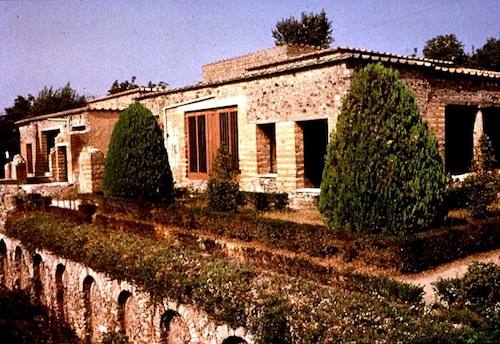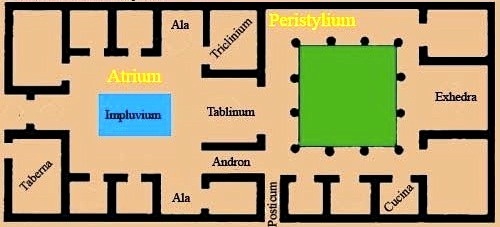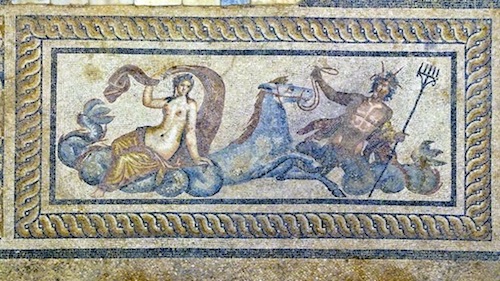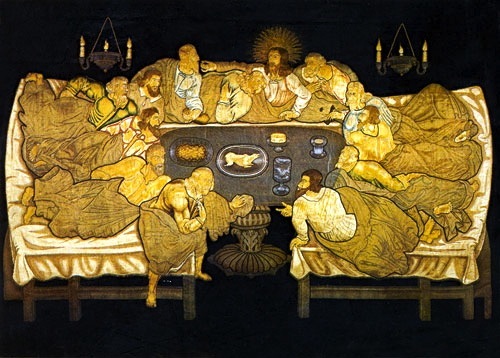The wealthy pagan or Christian’s home in ancient Rome was his “domus” from which we get our word “domicile.” Their villas were probably about 9,000 square feet and made of smoothed mud bricks with a tile roof. The wealthy preferred to live in the hills surrounding Rome away from the sounds, soot and smells of the city.

The home was called a villa from Latin “villa” meaning “country home of a wealthy Roman.” We get our word “village” from that word and the word “villain” originally meant in English “a country, rustic person.”

The Roman villa was laid out on an axis like a long rectangle. There was the entrance at the street end; then a vestibule for receiving guests; an atrium with a skylight; rooms on either side of the atrium for entertaining, for overnight guests or for studying; at the end of the atrium was the office where the master of the house received his guests/supplicants; behind the office was the back of the house and the peristyle, a garden surrounded by columns with a pool in the center and an open ceiling for light; off the peristyle was the kitchen, dining rooms, a bathroom with flush toilets and a sewage system; the bedrooms were at the back of the villa and, finally, the exedra at the very back of the home where one could have intimate conversations.

All the walls and floors were painted or mosaiced with scenes of forests or flowers or gods or myths or, in the case of the wealthy in Pompeii, scenes of sexual intercourse of all known types with all different combinations of sexes.

The homes did not have windows. The only natural light were the two open ceilings in the atrium and the peristyle. They were sloped so rainwater could be funneled into the refreshing pools beneath the ceilings for drinking and bathing water.

The kitchens in the backs of the large homes were smoky, but maybe had a side door for ventilation. When the family ate, they reclined, Roman-style, on their sides propped up on their left elbows, as did Jesus and His disciples: “When evening came, Jesus was reclining at the table with the Twelve. And while they were eating, he said, “Truly I tell you, one of you will betray me.” Matthew 26:20,21.

The bedrooms of the wealthy had low gilded-gold or ivory beds with leather strips for springs and feathers for mattresses. The furniture was usually made of wood gilded with gold.

We know the Israelites had ivory beds way back in the 760’s BC when the prophet Amos prophesied a time of disaster for the rebellious Israelites: “You put off the day of disaster and bring near a reign of terror. You lie on beds adorned with ivory and lounge on your couches. You dine on choice lambs and fattened calves.” Amos 4:3,4 Like the ancient wealthy Romans and Jews, the wealthy in all ages have always had lots of “stuff” made of gold and silver.
The wealthy homes of the ancient Romans were as sumptuous and comfortable as any could be at that time. A normal wealthy Roman probably had about fifty or more slaves to serve him, his family and his home. Slaves catered to the master and his family’s needs and did everything to keep the home clean, comfortable and exactly how the master wanted it.—Sandra Sweeny Silver
